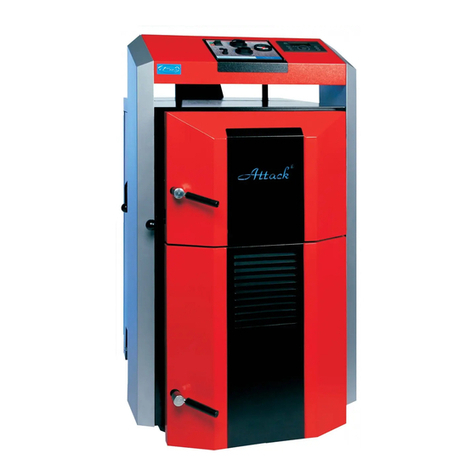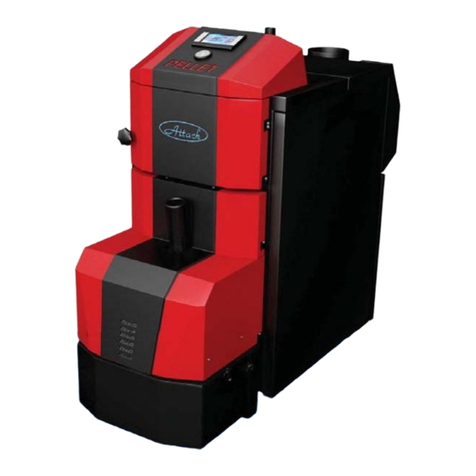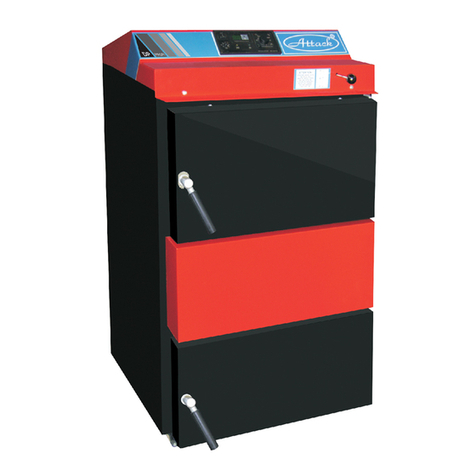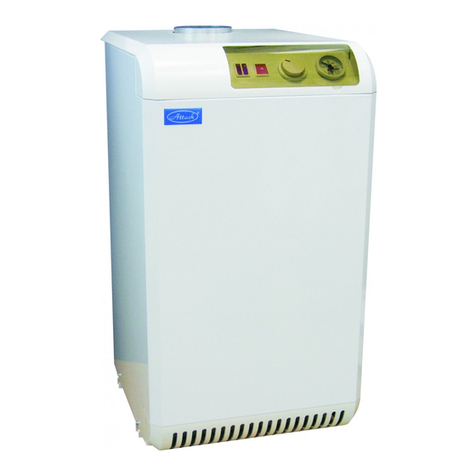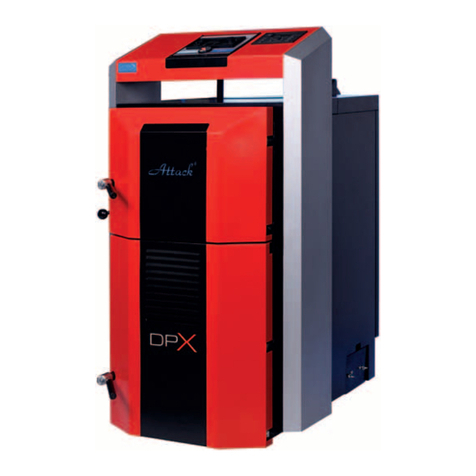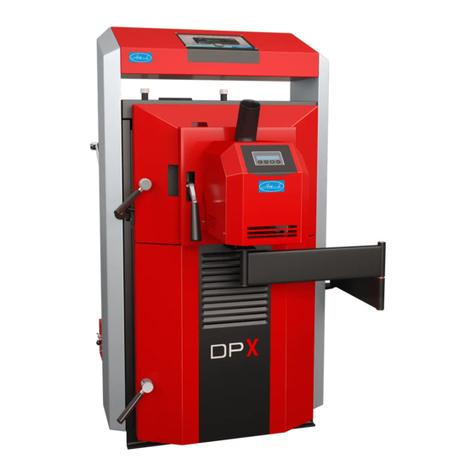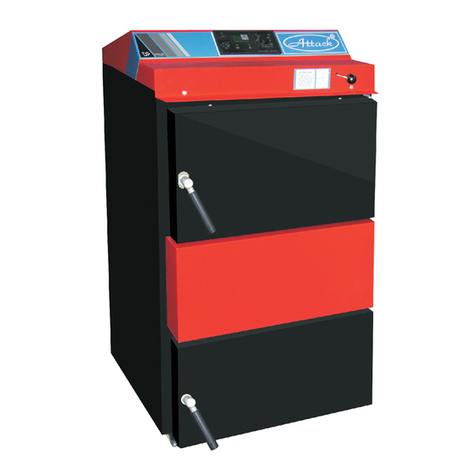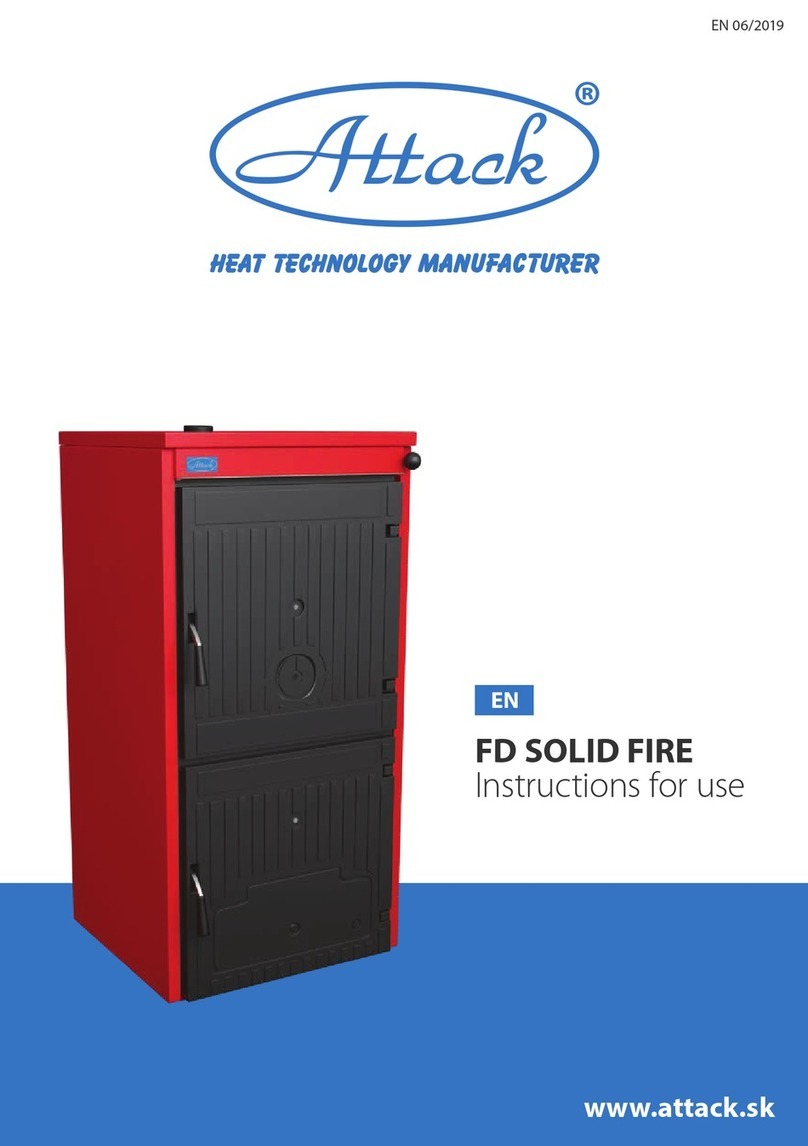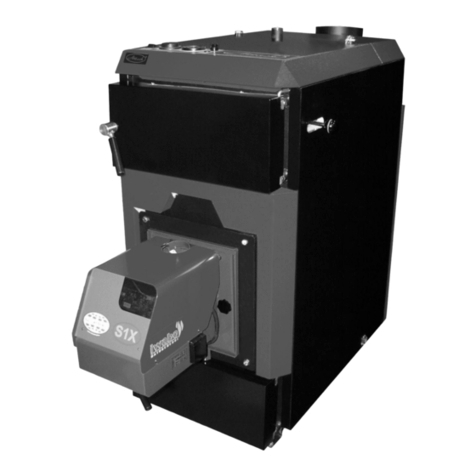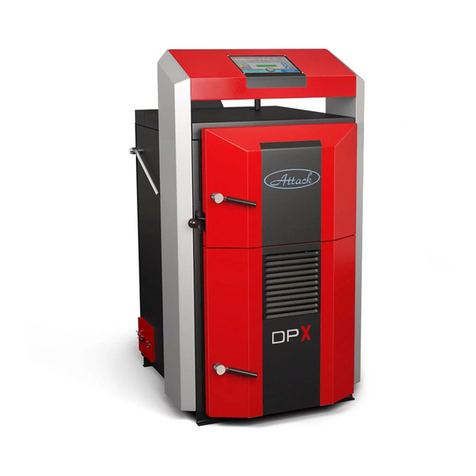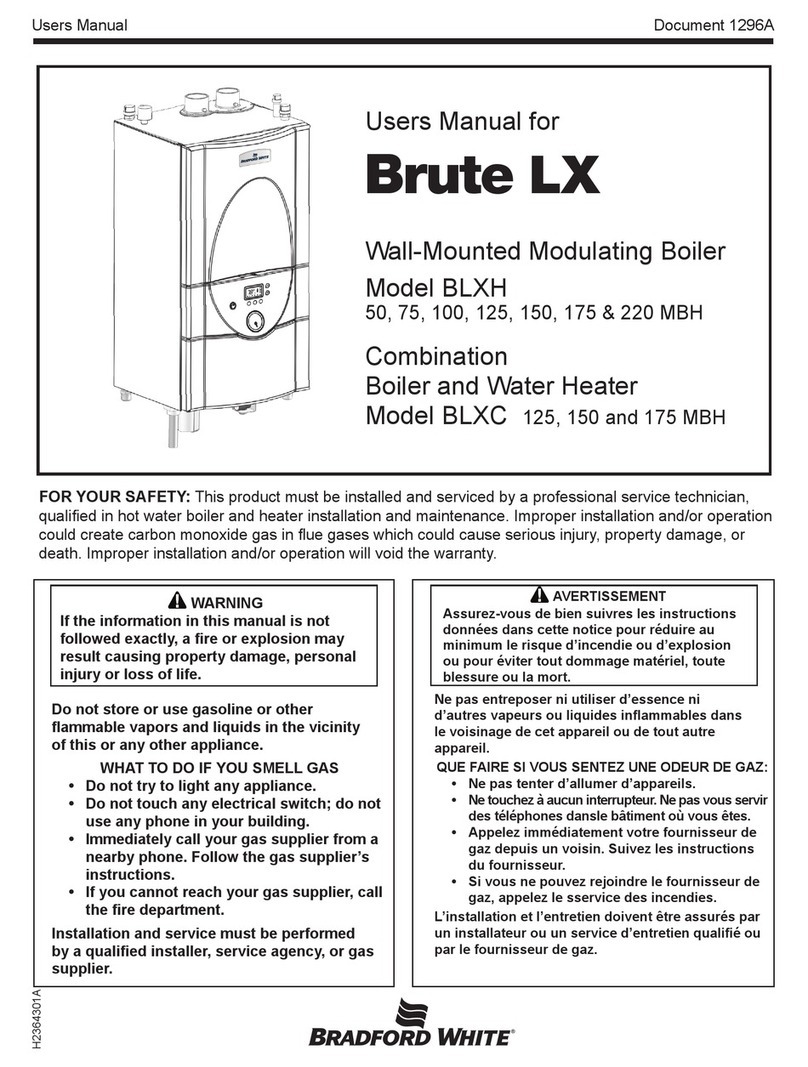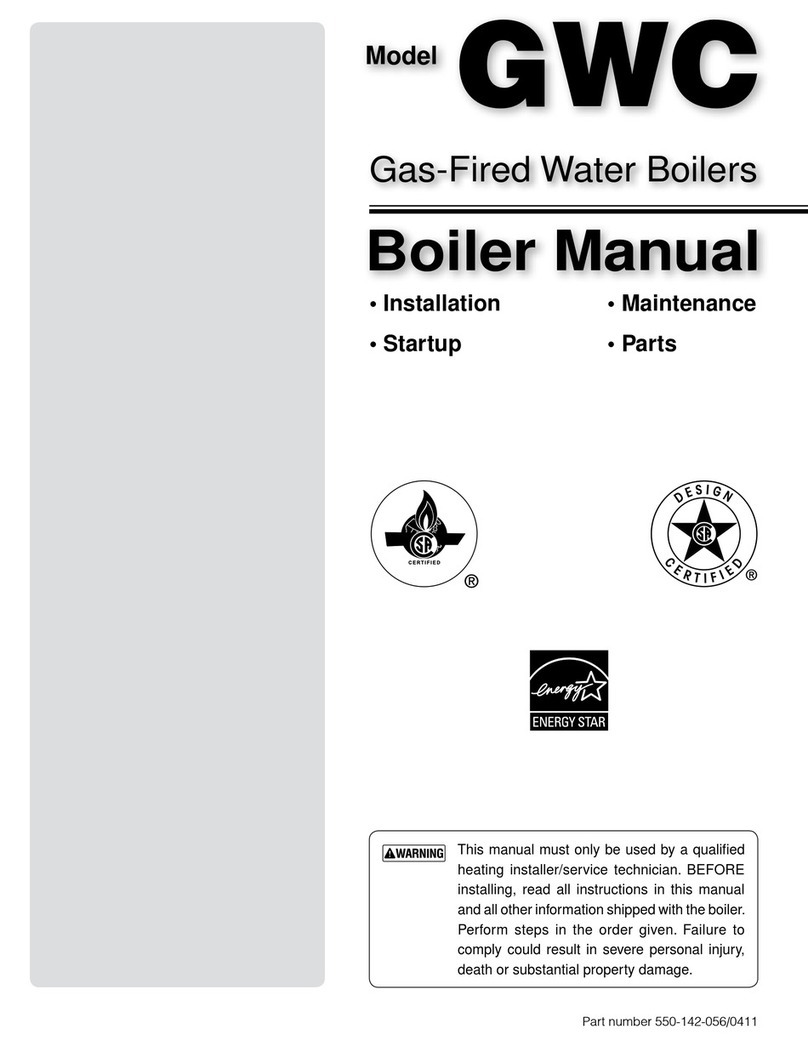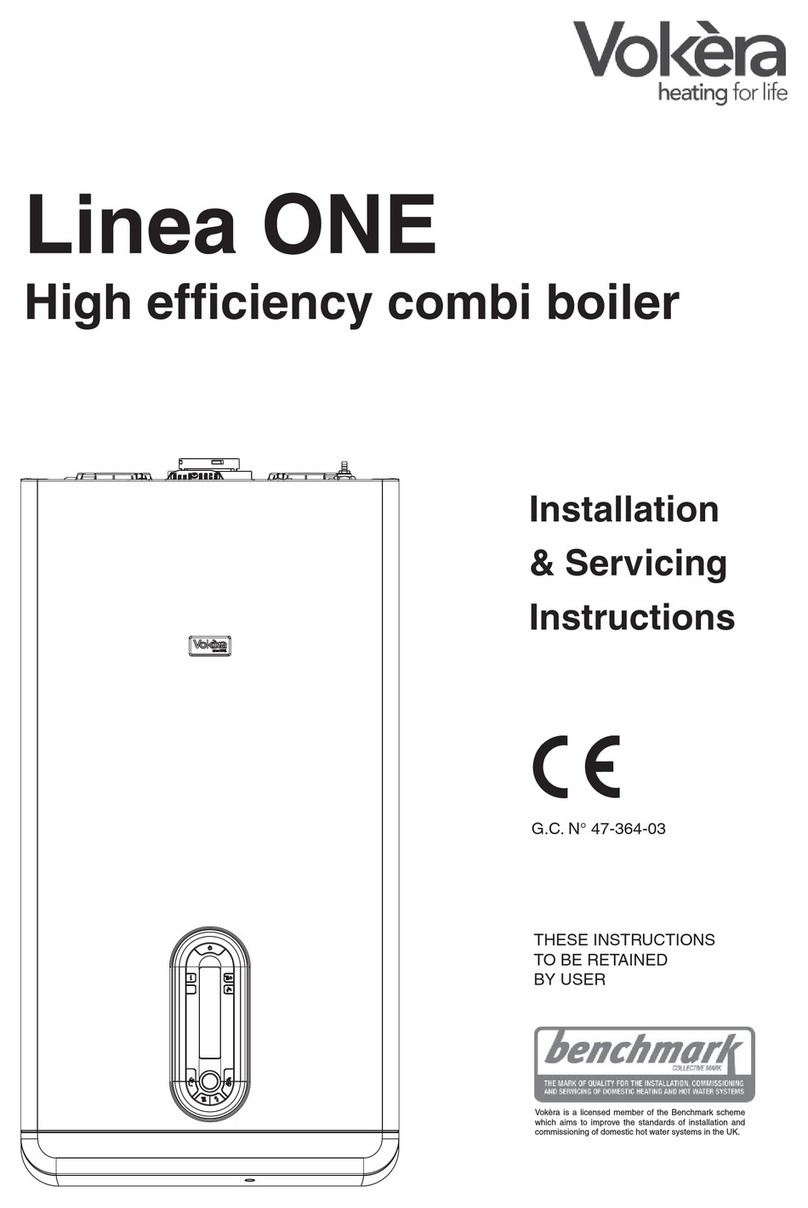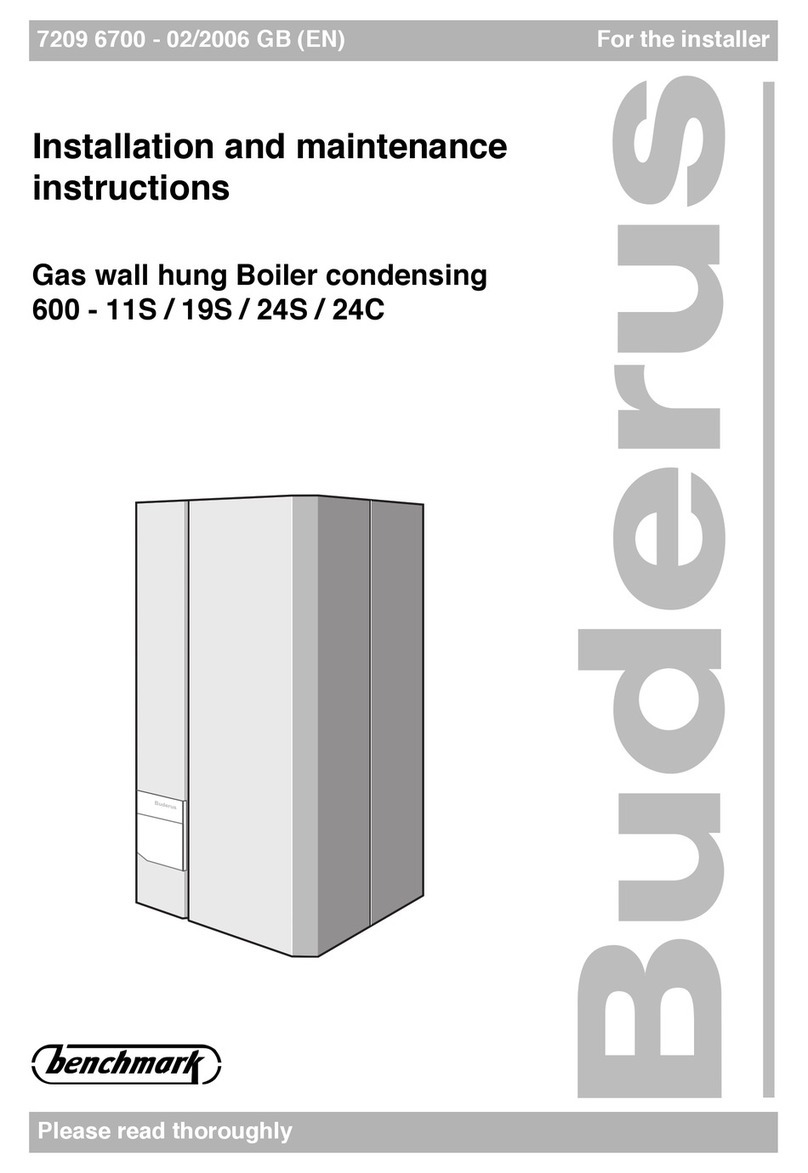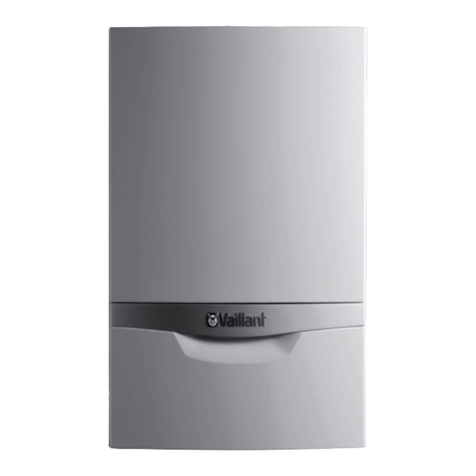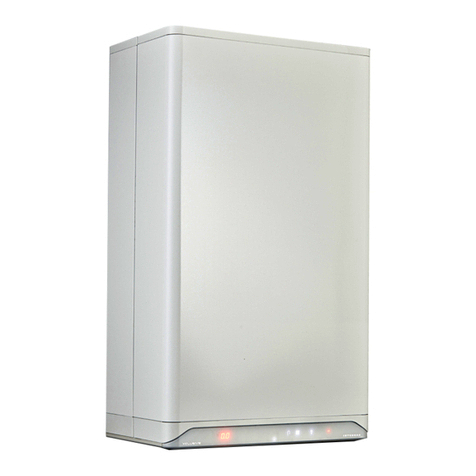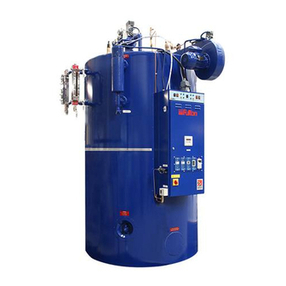16
2.4.8 CONNECTION TO THE ACCUMULATION TANKS
The accumulation tanks are connected to be warmed and the accumulated heat is continually
used according to the requirements of the heated space. When the boiler operates at full output,
the accumulation tanks are heated to 80–90 °C. Usage of the accumulation tanks together with
the boiler ATTACK WOOD&PELLET brings several advantages. The main advantages are:
prolonged life of the boiler, cleaner operation, minimal creation of acids and condensate, smaller
frequency of the fuel loading, lower probability of the boiler overheating and fuel saving.
The recommended volume of the accumulation tank for the boiler ATTACK WOOD&PELLET 25 is
2.000 l (the min. volume is 1.250 l). By full load of the hardwood (i.e. 6 hours of operation at full
output of 25 kW), the boiler produces 150 kWh of energy. This is adequate to the loading of the
2.000 l accumulation tank from 20 °C to 80 °C, if there is no other energy consumption. Thereby
it is necessary to consider the boiler usage and operation as well, when you are choosing the
accumulation tank: by the accumulation tank of 2.000 l it is necessary to load the full chamber,
by 1.000 l there is half of the chamber to be loaded (if there is no energy outtake from the tank).
Example 1:
The external temperature of environment is -5 °C and the heat loss of the building is 10 kW. The
boiler output by full operation is 25 kW. There is an accumulation tank of 1.250 l, that is
discharged (its upper and bottom temperature is 20 °C). As the heating system (to cover the heat
loss) takes 10 kW from the accumulation tank and the boiler has the output of 25 kW, the
accumulation tank is heated by the remaining 15 kW. The output of 15 kW, by the full load of
hard wood and during the 6 hours of operation, creates the energy of 90 kWh. This energy heats
the accumulation tank from 20 °C to 62 °C despite of the fact, that the 10 kW are being taken.
This is a safe and economical operation, when the heat is not taken into the waste (the boiler
was cooled down by the aftercooling circuit). The boiler is able to cover the heat loss for 15
hours just by a single load of the wood.
Example 2:
The external temperature of the environment is +3 °C and the heat loss of the object by this
temperature is 5 kW. The boiler output at full operation is 25 kW. There is an accumulation tank
of 1.250 l, that is discharged (its upper and bottom temperature is 20 °C). As the heating system
(to cover the heat loss) takes 5 kW from the accumulation tank and the boiler has the output of
25 kW, the accumulation tank is heated by the remaining 20 kW. The output of 20 kW, by the full
load of hard wood and during the 6 hours of operation, creates the energy of 90 kWh. This
energy heats the accumulation tank from 20 °C to 82 °C despite of the fact, that the 10 kW are
being taken. This is a safe and economical operation, when the heat is not taken into the waste,
but if the heat loss was smaller, the boiler could get overheated, because it would not be cooled
down. In such case it would come to activation of the aftercooling circuit and the excessing heat
would be taken into the waste. In case of the constant heat loss of the object (5 kW), the charged
accumulation tank would cover the heat loss approximately for the next 24 h. It means that by
a single load of wood and under the above mentioned conditions it would be possible to cover
the heat loss of the building for 30 hours.
Thereby it is very important to load just the amount of wood, adequate for heating the
accumulation tank and not to overheat it, because the excessive heat would be taken into the
waste unused. Such operation would not be economical and the safety element, the
aftercooling circuit would have to be activated.
The bigger volume of the accumulation tank decreases the risk of overheating and the
frequency of loading the wood.





















